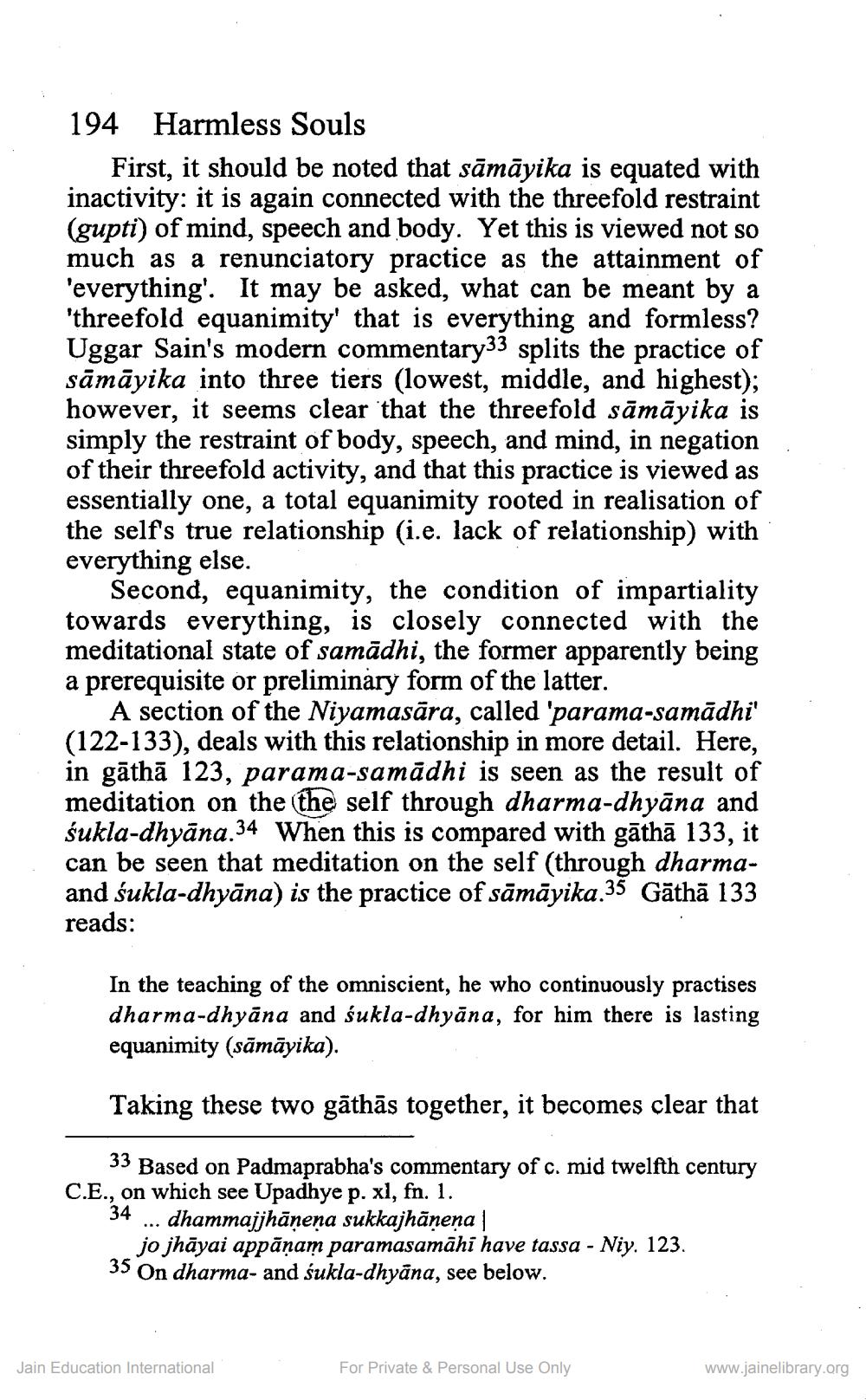________________
194 Harmless Souls
First, it should be noted that sāmāyika is equated with inactivity: it is again connected with the threefold restraint (gupti) of mind, speech and body. Yet this is viewed not so much as a renunciatory practice as the attainment of 'everything'. It may be asked, what can be meant by a 'threefold equanimity' that is everything and formless? Uggar Sain's modern commentary33 splits the practice of sāmāyika into three tiers (lowest, middle, and highest); however, it seems clear that the threefold sāmāyika is simply the restraint of body, speech, and mind, in negation of their threefold activity, and that this practice is viewed as essentially one, a total equanimity rooted in realisation of the self's true relationship (i.e. lack of relationship) with everything else.
Second, equanimity, the condition of impartiality towards everything, is closely connected with the meditational state of samadhi, the former apparently being a prerequisite or preliminary form of the latter.
A section of the Niyamasāra, called 'parama-samādhi' (122-133), deals with this relationship in more detail. Here, in gāthā 123, parama-samadhi is seen as the result of meditation on the the self through dharma-dhyāna and śukla-dhyāna.34 When this is compared with gāthā 133, it can be seen that meditation on the self (through dharmaand śukla-dhyāna) is the practice of sāmāyika.35 Gāthā 133 reads:
In the teaching of the omniscient, he who continuously practises dharma-dhyāna and śukla-dhyāna, for him there is lasting equanimity (sāmāyika).
Taking these two gāthās together, it becomes clear that
33
Based on Padmaprabha's commentary of c. mid twelfth century C.E., on which see Upadhye p. xl, fn. 1.
34
dhammajjhāņeṇa sukkajhāņeṇa |
jo jhāyai appāṇam paramasamāhi have tassa - Niy. 123. 35 On dharma- and śukla-dhyāna, see below.
Jain Education International
For Private & Personal Use Only
www.jainelibrary.org




